USAFNM R&D Aircraft - April 28th, 2012
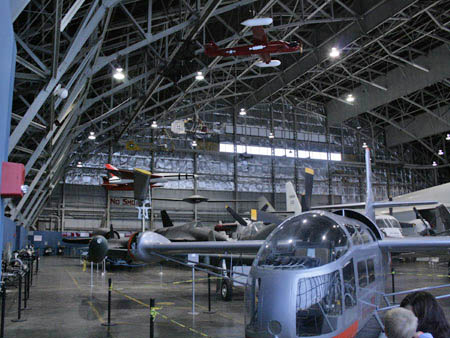
Enter the Research & Development Aircraft hanger
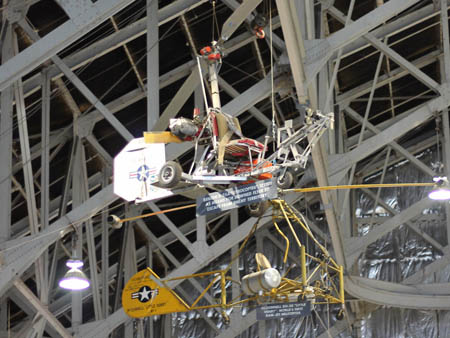
Bensen X-25A Gyrocopter & McDonnell XH-20 Little Henry

Bell XV-3 first successful tilt-rotor aircraft 1951
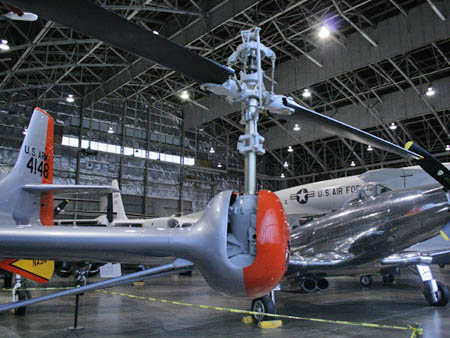
The XV-3 paved the way for the CV-22 Osprey
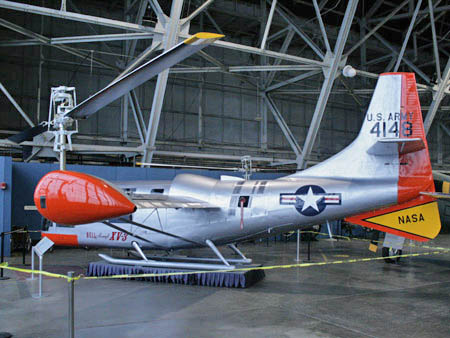
Only surviving XV-3 of two made, retired in 1965
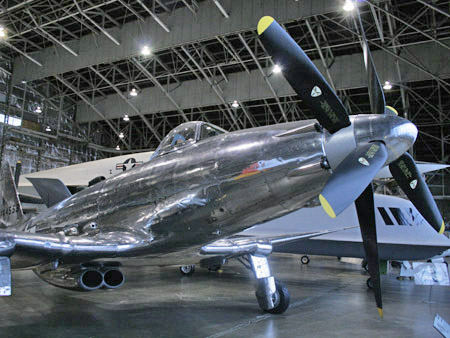
Fisher P-75A Eagle flight tested in 1943
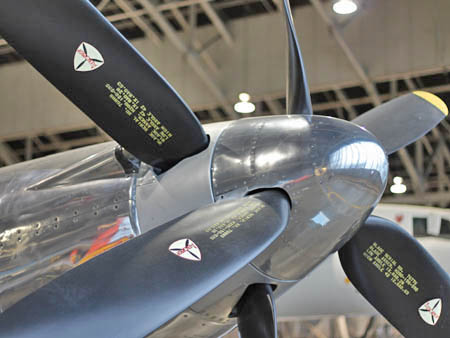
2 coaxial contra-rotating propellers w/dual drive shafts
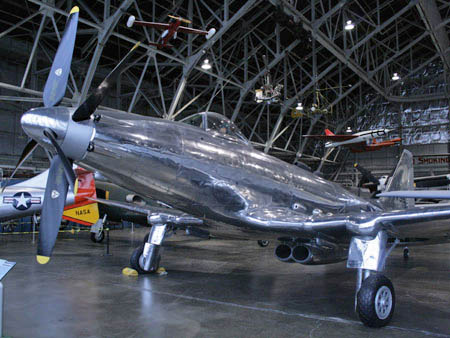
Unsatisfactory performance cancelled the P-75A in 1944
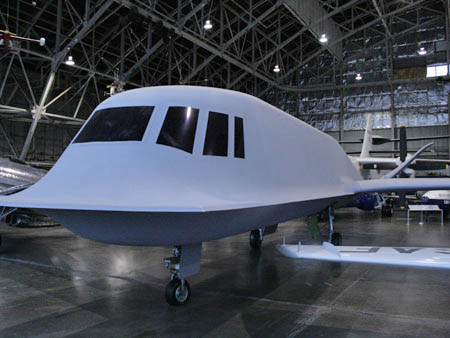
Tacit Blue stealth technology tester flew 135 times 1982-85

Northrop X-4 swept wing semi-tailess transonic flight test
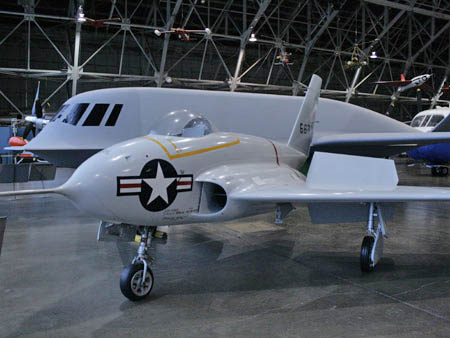
2 X-4's flew 1948-53 & proved horizontal tails are needed
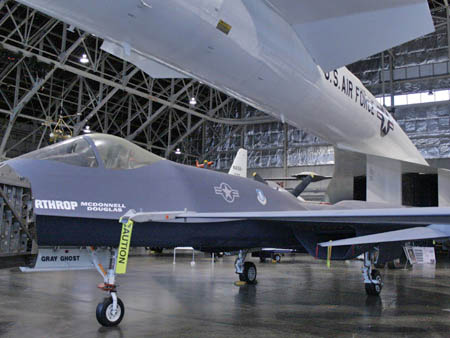
Northrop-McDonnell Douglas YF-23A Black Widow II
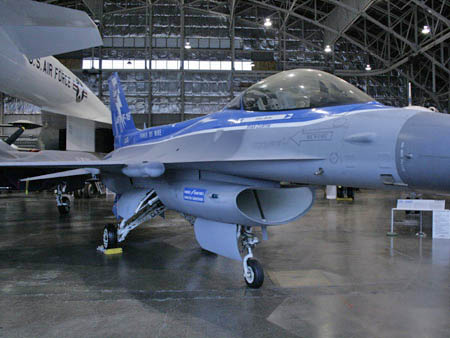
General Dynamics AFTI/F-16 made 700 flights 1978-2000
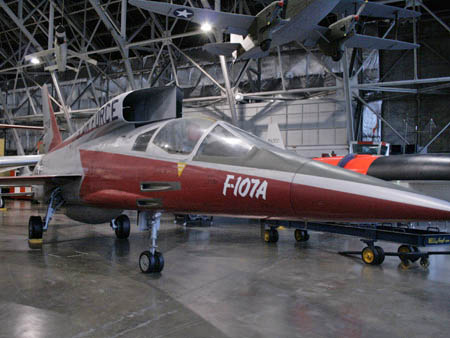
North American F-107A extensively redesigned F-100B
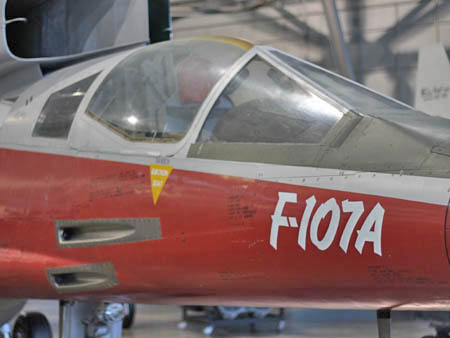
Prototype aircraft that flew Mach 2 and climb at Mach 1
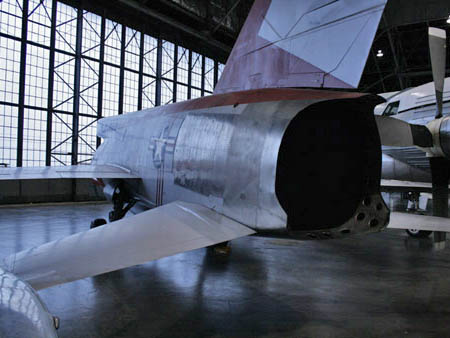
No. 2 of 3 F-107A aircraft that flew 1956-57

Bell XGAM-63 Rascal air-surface guided nuclear missile
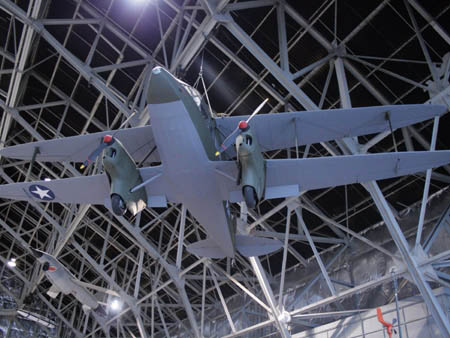
De Havilland DH 89 Dominie built in 1944

Teledyne-Ryan AQM-34L Firebee RPV built in 1960
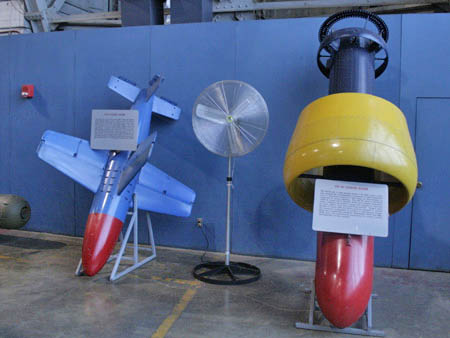
VB-9 (left) and VB-10 Guided Bombs tested 1944-45

VB-6 "Felix" heat seeking 1000 pound Guided Bomb
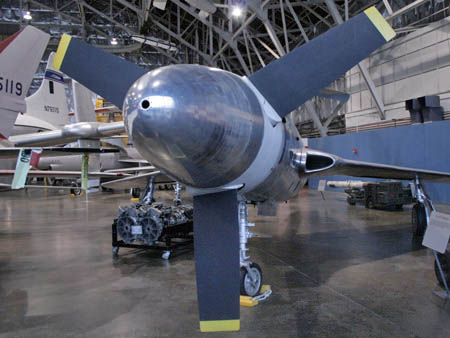
Republic XF-84H turboprop T-tail modified F-84F
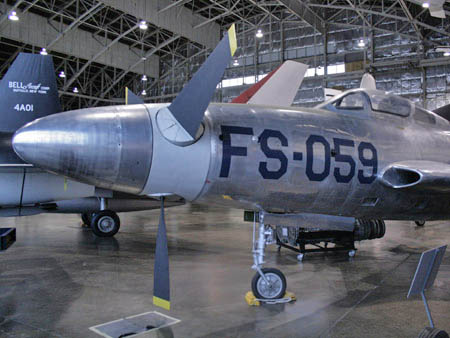
Triangular fin added to reduce high torque from the prop
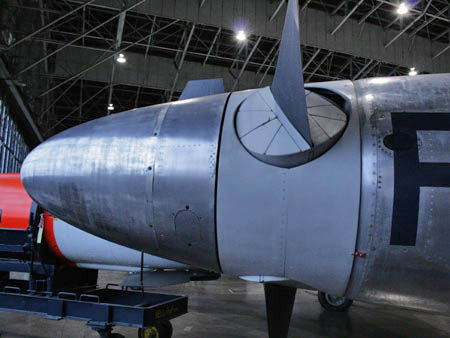
Ground crew nausea & headaches = Thunderscreech
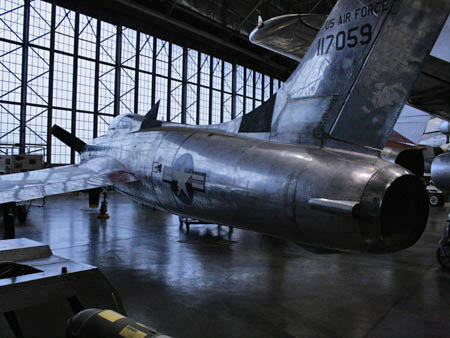
#1 of two XF-84H's flew 8 of the 12 flights 1955-56
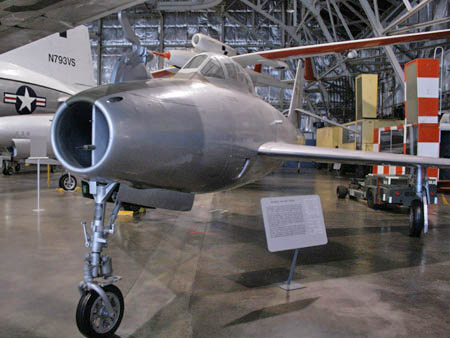
Republic YRF-84F "FICON" designed to be carried by B-36
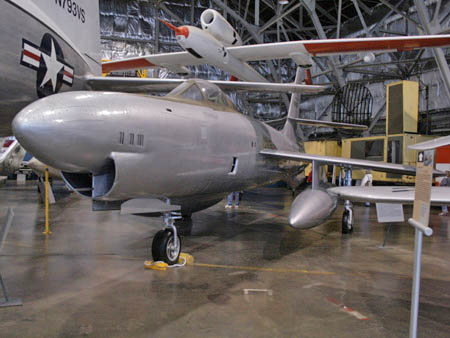
Republic XF-91 Thunderceptor rocket powered interceptor
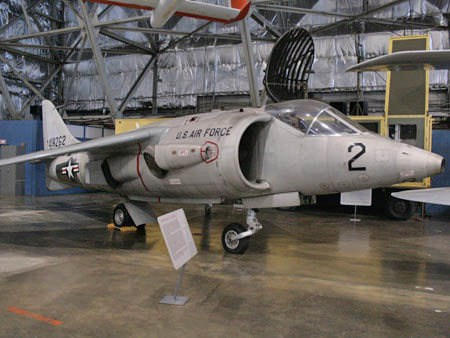
Hawker Siddeley XV-6A Kestrel (1961) led to 1969 Harrier

Ryan X-13 Vertijet VTOL jet aircraft flew 1955-59
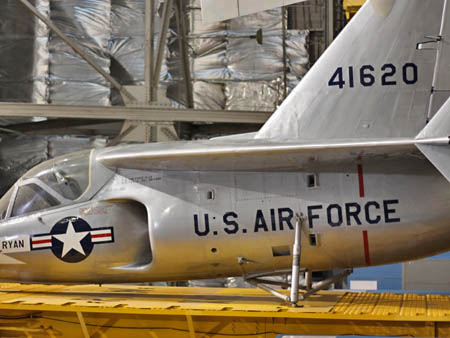
X-13 had a successful VTOL with level flight in 1957
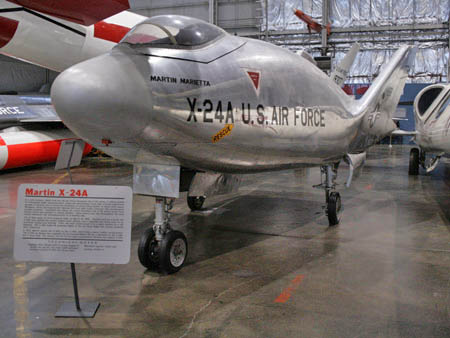
Martin X-24A lifting body return from space test aircraft
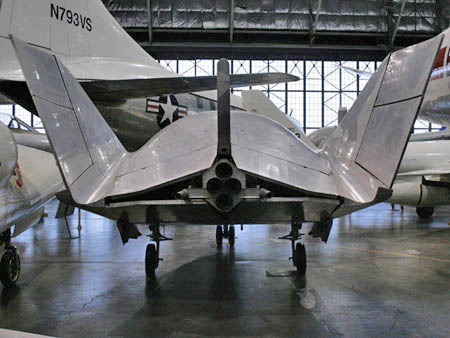
This jet-powered Martin SV-5J (X-24A derivative) never flew
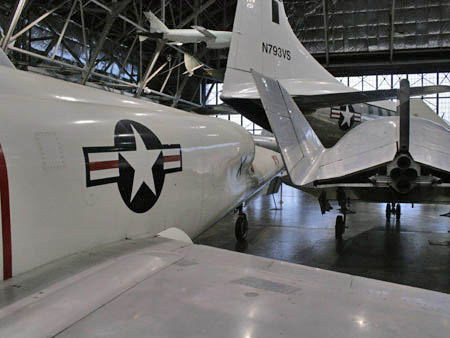
To the left, the Douglas X-3 "Stiletto" twin turbojet
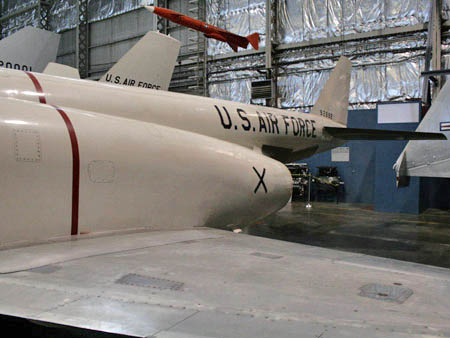
Designed for sustained supersonic flight at high altitudes
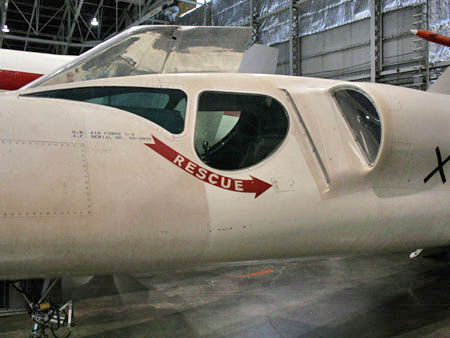
Also to test titanium and new construction techniques
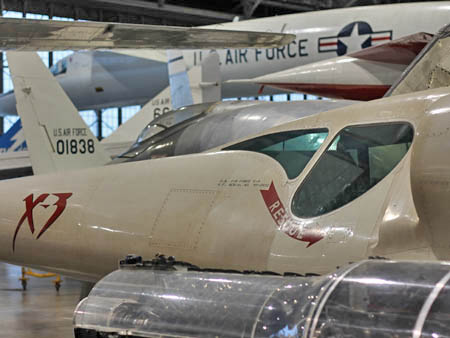
X-3 took off itself, so engines did not achieve potential
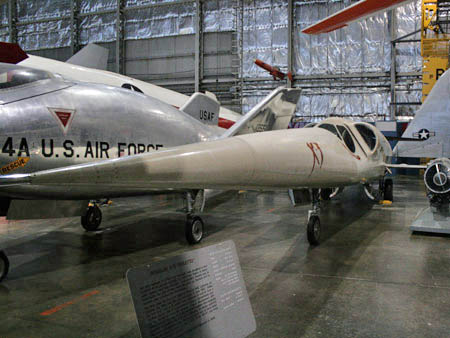
X-3 benefitted the design of F-104, X-15, and SR-71
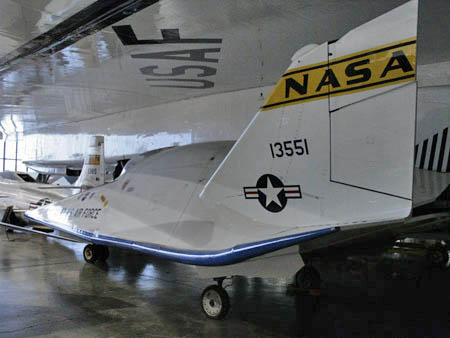
Martin X-24B delta shaped lifting body landed safely 1975
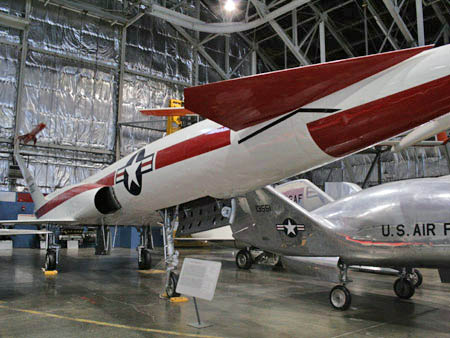
North American X-10 pilotless supersonic research 1953-7
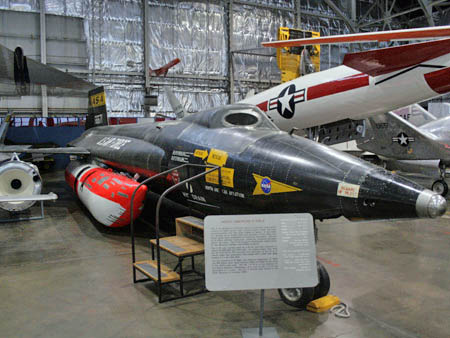
North American X-15A-2 flew above 50 miles @ 4000mph
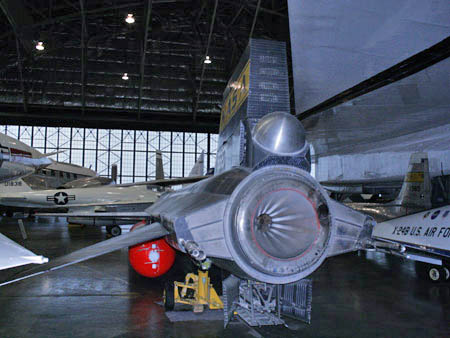
X-15 rocket fired 80-120 seconds then 11 min glide down
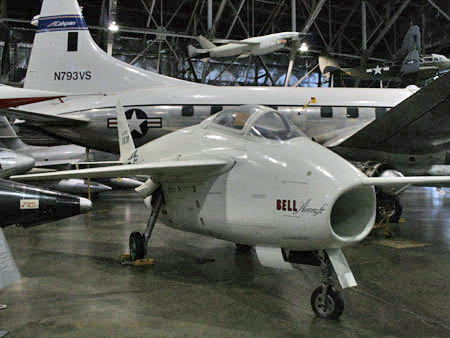
Bell X-5 first to vary sweepback in flight, 1951-55
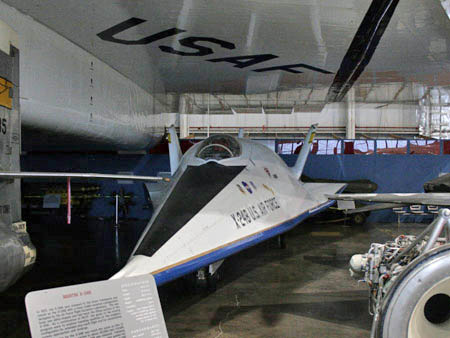
X-24B flight test landings led to the Space Shuttle
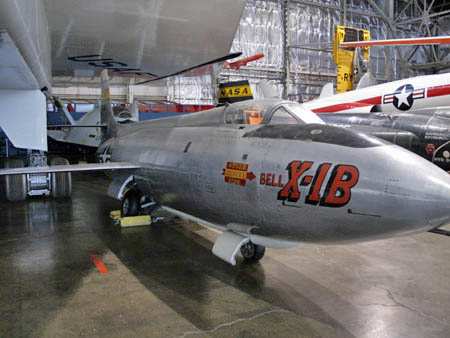
Bell X-1B tested aerodynamic heating & pilot RCS, 1954
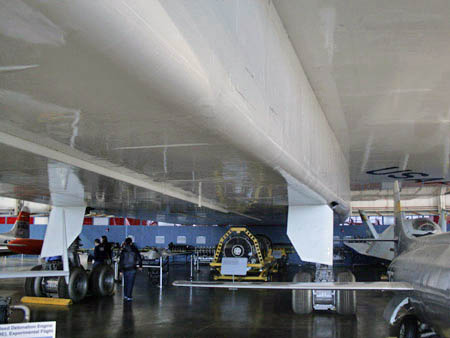
Walk underneath the North American XB-70 Valkyrie
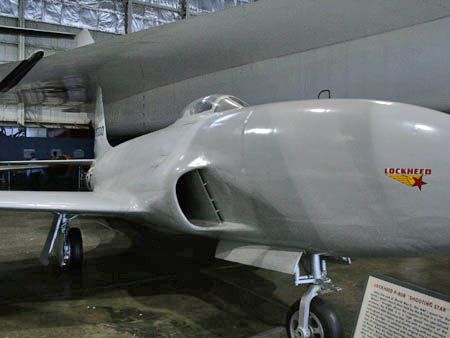
Lockheed P-80R Shooting Star achieved 623mph in 1947
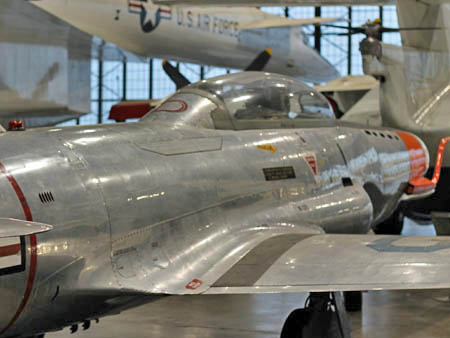
Lockheed NT-33A in-flight simulator for human factors
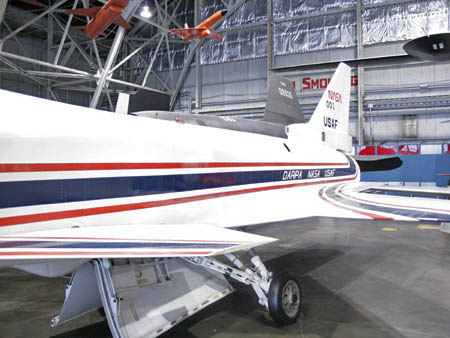
Grumman X-29A forward swept wing test aircraft
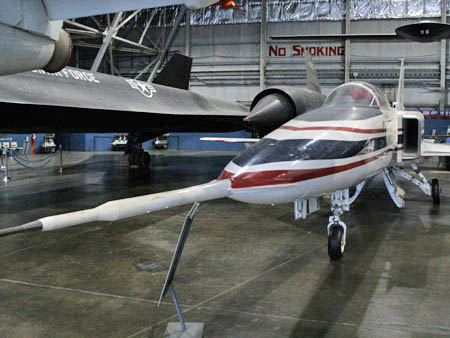
Composite material helped wings stay rigid @ high speed

#1 (here) of two X-29As flew 1985-1994, #2 flew past 1990
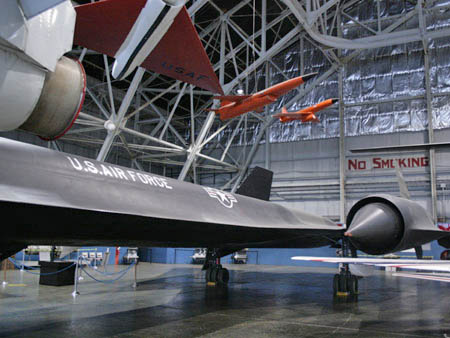
Lockheed YF-12A Mach3 supersonic bomber interceptor
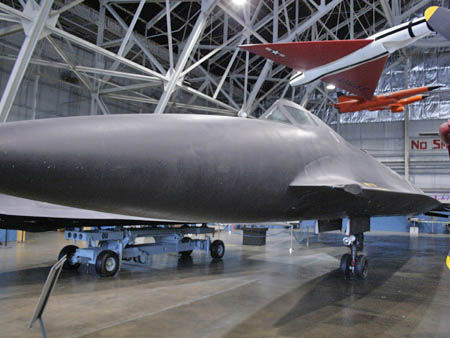
YF-12A were never operational & testing ended in 1966
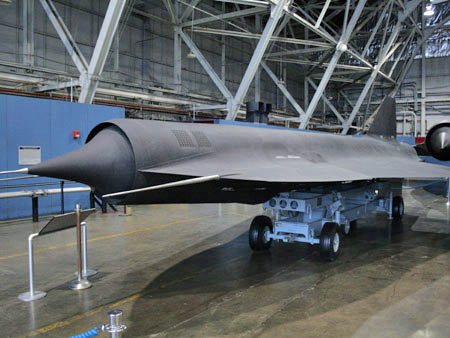
Lockheed D-21B unmanned reconnaissance aircraft

D-21B flew in 1966, was cancelled in 1971 & still classified
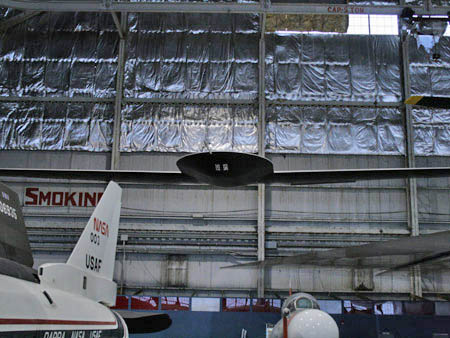
Darkstar stealth RPV transfered digital images, 1996-99
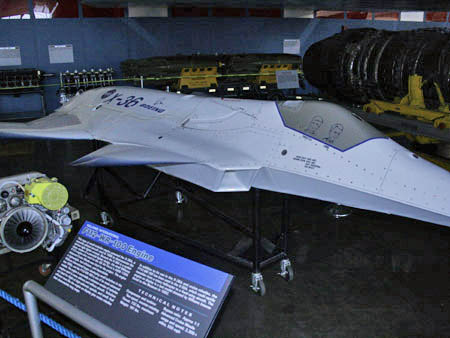
NASA/Boeing X-36 tailless fighter RPV, 1997-98
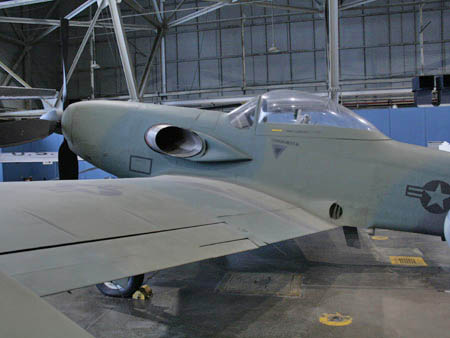
Piper PA-48 Enforcer light attack aircraft evaluated 1984

Now, over the XV-3 tiltrotor wing . . .
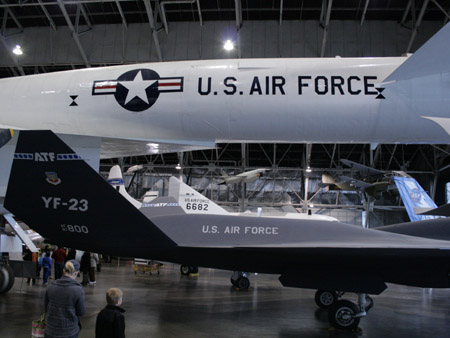
Towering over no vectored thrust YF-22 loser
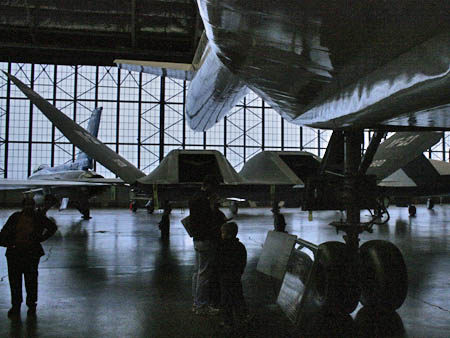
Although YF-23 does have interesting exhaust ports
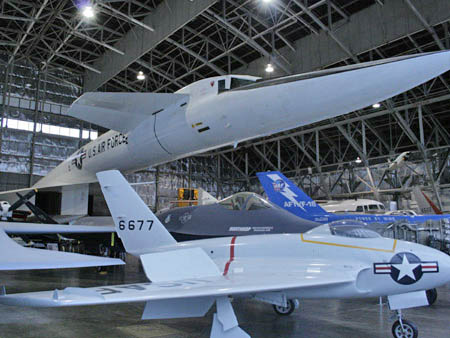
The one and only North American XB-70 Valkyrie!
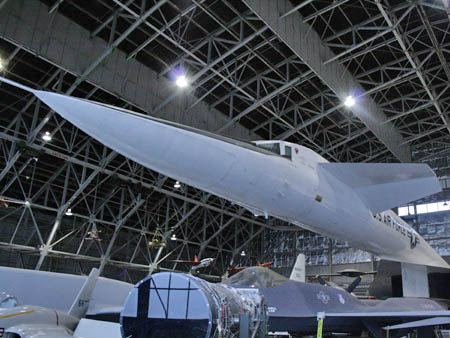
One of the world's most exotic airplanes
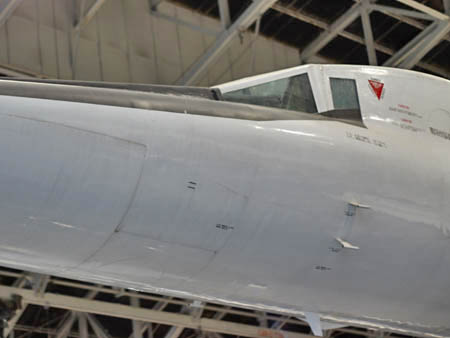
A high altitude bomber that could fly at Mach 3
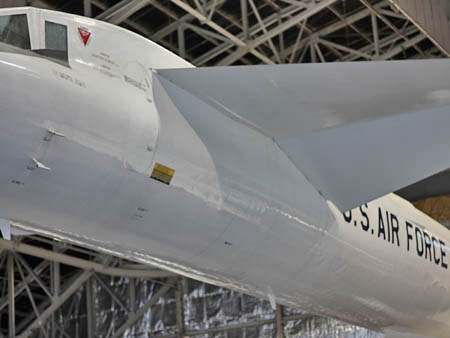
But funding limited construction on only 2 test aircraft
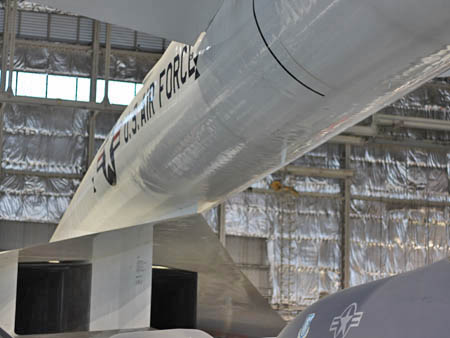
Six General Electric YJ-93s of 30,000 lbs. thrust each
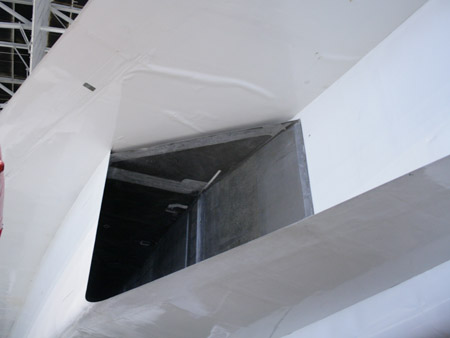
Stainless-steel honeycomb sandwich panels & titanium
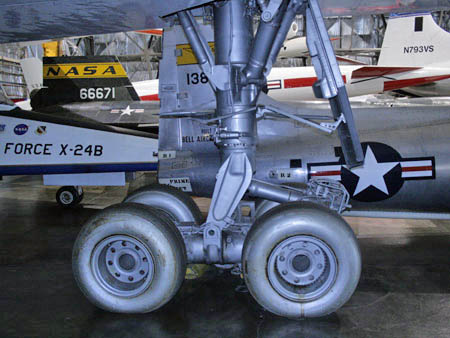
Landing gear had to support 534,700 lbs. loaded
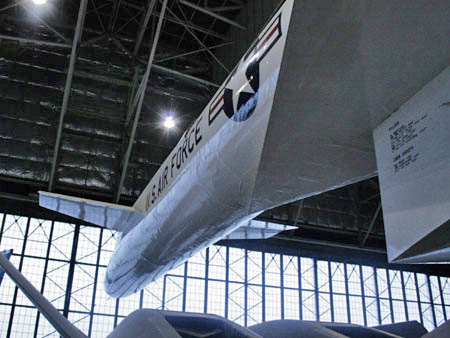
No. 1 XB-70 first flew on Sept. 21, 1964, retired in 1969
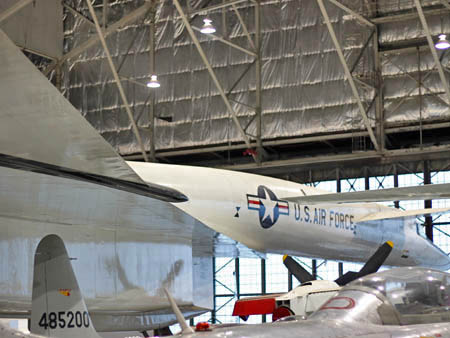
No. 2 XB-70 crashed in a mid-air collision on June 8, 1966
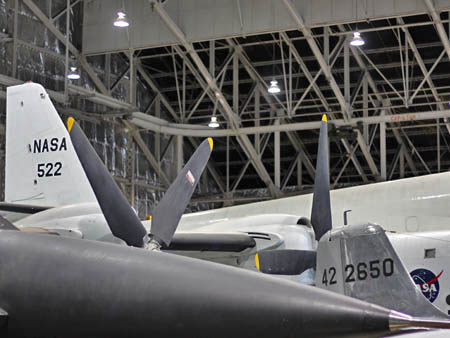
XB-70 is 186ft long with a wingspan of 105ft
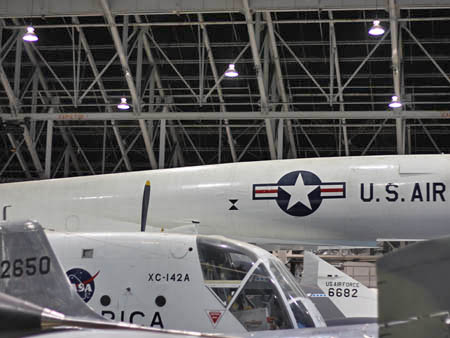
It flew over 2000mph (Mach 3) on October 14, 1965
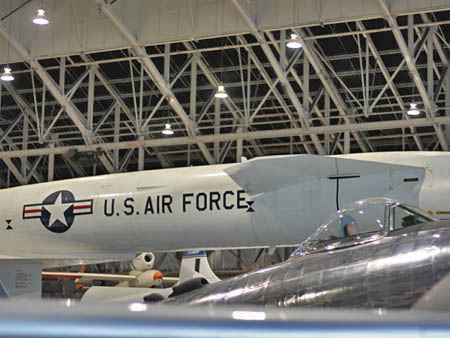
The XB-70 was the point of this KYOH trip
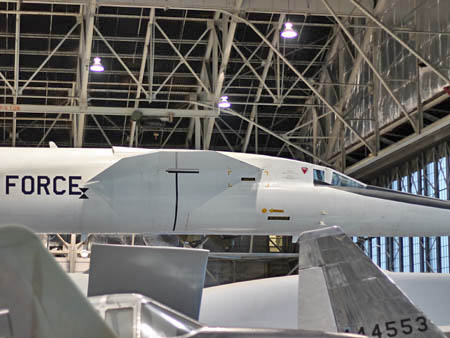
Like Mecca to one atmospheric aerospace engineer